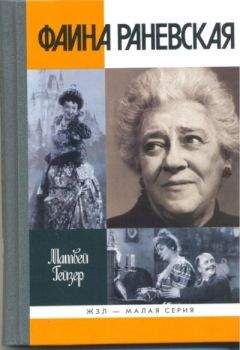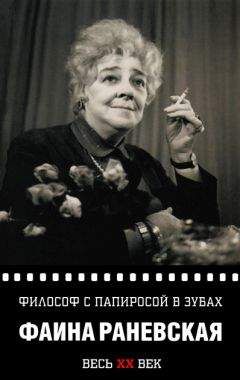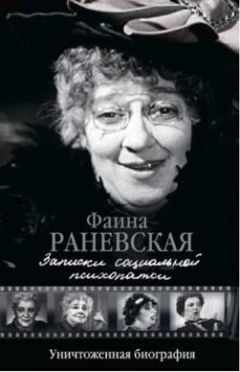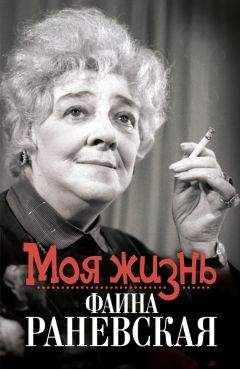Степан Ванеян - Гомбрих, или Наука и иллюзия. Очерки текстуальной прагматики
195
См.: Seyfarth L. Theoretiker der Illusion // Idem. Unsichtbare Sammlungen. Kunst nach der Postrmoderne. S. 172–182.
196
О Гегеле у Гомбриха см.: Tributes… P. 51–70.
197
См.: Elkins J. Ten Reasons Why E.H. Gombrich is not Connected to Art History // Relativism Versus Universalism & Ernst Hans Gombrich / J. Bakoš, H. Affairs (eds.). 2009. Issue 3. September. P. 304–310.
198
Gombrich E. Kunst und Kritik. Stuttgart, 1993.
199
Gombrich E. Reflections on the History of Art: Views and Reviews / R. Woodfield (ed.). Oxford, 1987.
200
Gombrich E. Art and Illusion. A Study in the Psychology of Pictorial Representation. London: Phaidon Press, 1960. Ссылки на издание 2002 г.
201
Достаточно подробная история возникновения книги (начиная с 1947 г.) приводится (вместе с уникальными архивными материалами Института Варбурга и Курто) в недавней публикации: Kopecky V. Letters to and from Ernst Gombrich regarding Art and Illusion, including some comments on his notion of “schema and correction” // Journal of Art Historiography. 2010. No. 3. December.
202
Art and Illusion… P. 19. – Пер. Е. А. Ванеян.
203
Art and Illusion… P. 24–25.
204
На тему «психоанализ и история искусства» см.: Gombrich E. Psycho-analysis and the history of art // International Journal of Psycho-analysis. Vol. 35. P. 401–411. Reprinted in: Meditations on a Hobby Horse, 1963.
205
У самого Гомбриха на эту тему см.: Gombrich E.H. Renaissance artistic theory and the development of landscape painting // Gazette des Beaux-Arts. Vol. 41. P. 335–360. Reprinted in: Norm and Form, 1966.
206
Промежуточно итоговый текст на эту тему (и в контексте полемики с Нельсоном Гудманом) см.: The “What” and the “How”: Perspective Representation and the phenomenal World // R. Rudner, I. Scheffler (eds). Logic and Art: Essays in Honor of Nelson Goodman. N.Y. Р. 129–149.
207
Mitchell T.J.W. Bildtheorie. Frankfurt а/M: Suhrkamp, 2008. S. 65.
208
Ibid.
209
Mitchell T.J.W. Bildtheorie… S. 66.
210
Ibid. S. 68.
211
Не побоимся привести самый сдержанный и свежий вариант варбурговской библиографии: Ferretti S., Pierce R. Cassirer, Panofsky, and Warburg: Symbol, Art, and History. 1989; Roeck B. Der junge Aby Warburg. 1996; Secchi L. Il metodo iconologico di Erwin Panofsky e le sue origini nel modello interpretativo dell’Istituto Aby Warburg. 1996; Burke P. Photographs at the Frontier: Aby Warburg in America, 1895–1896. 1999; Woodfield R. Art History as Cultural History: Warburg’s Projects. 2001; Bertozzi M. Aby Warburg e le metamorfosi degli antichi Dèi. 2002; Cernia Slovin F. Obsessed by Art: Aby Warburg: His Life and His Legacy. 2006; Marazia Ch., Stimilli D. Die unendliche Heilung: Aby Warburgs Krankengeschichte. 2007; Michaud Ph.-A., Hawkes S., Didi-Huberman G. Aby Warburg and the Image in Motion. 2007; Russell M. A. Between Tradition and Modernity: Aby Warburg and the Public Purposes of Art in Hamburg, 1896–1918. 2007; Michels K. Aby Warburg: Im Bannkreis der Ideen. 2008; Forti N., Cieri Via Cl. Aby Warburg e la cultura italiana. Tra sopravvivenze e prospettive di ricerca. 2009; Kreft Chr. Adolph Goldschmidt und Aby M. Warburg: Freundschaft und kunstwissenschaftliches Engagement. 2010; Rösch P. Aby Warburg. Stuttgart, 2010; Treml M., Flach S., Schneider P. Warburgs Denkraum. Formen, Motive, Materialien. 2014; Didi-Huberman Ge., Bischoff M. Das Nachleben der Bilder: Kunstgeschichte und Phantomzeit nach Aby Warburg. 2010; Hurttig M.A., Ketelsen Th., Rehm U., Wedepohl Cl. Die entfesselte Antike. Aby Warburg und die Geburt der Pathosformel. 2012; Johnson Christopher D. Memory, Metaphor, and Aby Warburg‘s Atlas of Images. 2012; Levine E.J. Dreamland of Humanists: Warburg, Cassirer, Panofsky, and the Hamburg School. 2013; Lofts S.G. The Warburg Years (1919–1933): Essays on Language, Art, Myth, and Technology. 2013; Baert B. Nymph. Motif, Phantom, Affect: A Contribution to the Study of Aby Warburg (1866–1929). 2014; Hurttig M.A. Antiquity Unleashed: Aby Warburg, Durer and Mantegna. 2014. Полная библиография Варбурга: Wuttke D. Aby M. Warburg-Bibliographie 1866 bis 1995: Werk und Wirkung. 1998. Среди русскоязычных публикаций в первую очередь следует назвать: Торопыгина М.Ю. Иконология. Начало. М., 2014.
212
Venturi L. Geschichte der Kunstkritik. München, 1972. S. 269–270.
213
Gombrich Е. Aby Warburg. An Intellectual Biography. London, 1970. Мы пользовались немецким изд.: Hamburg: Philo & Philo Fine Arts, 2006.
214
Gombrich Е. Aby Warburg… S. 94–99 (упоминания психоаналитических и феноменологических перспектив – на нашей совести, Гомбрих здесь более сдержан).
215
Между прочим, мотив «невротической лошади» – сквозной для, так сказать, психотерапевтической иконологии. См., например: Watzlawick P. Wie wirklich ist die Wirklichkeit? Wahn, Täuschung, Verstehen. Piper Taschenbuch; 14. Aufl. 2005. S. 59.
216
О самом принципе персонификации у самого Гомбриха см.: Personification // R.R. Bolgar (ed.). Classical influences on European culture A.D. 500–1500. Cambridge, 1971. P. 247–257.
217
Gombrich Е. Aby Warburg… S. 97.
218
Gombrich Е. Aby Warburg… S. 98–99.
219
Gombrich Е. Aby Warburg… S. 109.
220
Ibid.
221
На тему эволюционизма у Варбурга отдельно см.: Gombrich E. Aby Warburg e l’evoluzionismo ottocentesco // Belfagor.
Vol. 49 (6). P. 635–649.
222
Gombrich Е. Aby Warburg… S. 106.
223
Ibid. S. 107.
224
Ibid.
225
Ibid.
226
Gombrich Е. Aby Warburg… S. 107.
227
Ср.: Kofler P. Ekstatische Kunst-Besonnenes Wort. Aby Warburg und die Denkräume der Ekphrasis. Wien; München; Bozen: Studien-Verl, 2009.
228
Ibid. S. 108.
229
Gombrich Е. Aby Warburg… S. 112.
230
Villhauer B. Aby Warburgs Theorie der Kultur: Detail und Sinnhorizont. Berlin: Akademie Verlag, 2002.
231
На тему связи Варбурга и Беньямина в контексте именно иудейской магической практики чтения как трансформации пространства (в том числе) см.: Wolfram G. Der leuchtende Augenblick: Über Menschen und Orte des Lesens. Berlin: Hentrich & Hentrich, 2013.
232
Гомбрих говорит, что все предшествующие интерпретации «должны пролить свет на этот последний и загадочнейший из “Четырех тезисов”» (Gombrich Е. Aby Warburg… S. 111).
233
Raulff U. Wilde Energien: Vier Versuche zu Aby Warburg. Göttingen: Wallstein, 2011.
234
Gombrich Е. Aby Warburg… S. 125–128.
235
Poppel S. Aby Warburg – Die Mehrdeutigkeit des Schlangenrituals: Zwischen Magie und Logos. Eine Untersuchung über die Grenzen der Kunstgeschichte hinaus. München: Grin Verlag, 2013.
236
См.: Cestelli Guidi B., Mann N. Grenzerweiterungen: Aby Warburg in Amerika 1895–1896. Hamburg: Dölling u. Galitz, 1999.
237
Ср. на эту тему: Roeck B. Florenz 1900: Die Suche nach Arkadien. München: C.H.Beck, 2004.
238
Gombrich Е. Aby Warburg… S. 112.
239
Ibid. S. 113.
240
См.: Flach S., Münz-Könen I., Streisand M. Der Bilderatlas im Wechsel der Künste und Medien. München: Fink, 2005.
241
См. на эту тему: Hensel T. Wie aus der Kunstgeschichte eine Bildwissenschaft wurde: Aby Warburgs Graphien. Berlin: Akad.Verl., 2011.
242
Cм.: Tausch H. (Hrsg.). Gehäuse der Mnemosyne (Formen der Erinnerung). Architektur als Schriftform der Errinnerung. Gottingen: Vandenhoeck & Ruprecht, 2003.
243
Panofsky E. Zum Problem der Beschreibung und Inhaltsdeutung von Werken der bildenden Kunst // Logos. 1932. Bd. 21. S. 103–119.
244
Idem. Iconography and Iconology: An Introduction to the Study in the Visual Arts // Studies in Iconology. N.Y., 1939.
245
См., в частности: Holly M.A. Panofsky and the Foundations of Art History. Ithaca, N.Y.: Cornell University Press, 1984.
246
Forssman E. Ikonologie und allgemeine Kunstgeschichte // Zeitschrift für Ästhetik und allgemeine Kunstwissenschaft. 1966. Bd. 11. S. 132–169.
247
См.: Куайн У.В.О. Преследуя истину [1990]. М., 2014. С. 12–19 (2. Предложения наблюдения).
248
См. у Гомбриха раннюю рецензию на основной текст Ч. Морриса: Morris С. Signs, Language and Behaviour // Art Bulletin. Vol. 31. P. 68–75. Reprinted in: Reflections on the History of Art, 1987.
249
Gombrich E. Aims and Limits of Iconology // Symbolic Images. Studies in the Art of the Renaissance. London, 1972. P. 1–22. Цит. по: Idem. Ziele und Grenze der Ikonologie // Ikonographie und Ikonologie. Theorien, Entwicklung, Probleme [Bildende Kunst als Zeichensystem / E. Kimmerling (Hrsg.)]. Köln. 1979. S. 377–433.
250
Ziele und Grenze der Ikonologie… S. 381.
251
См.: Pächt O. Methodisches zur Kunsthistorischen Praxis. Ausgewählte Schriften. München: Prestel, 1977. S. 249.
252
Ziele und Grenze der Ikonologie… S. 384.
253
Ibid. Следует все-таки признать за всем этим «интенционалистскую» теорию значения.
254
См.: Ванхузер К.Дж. Искусство понимания текста. Литературоведческая этика и толкование Писания. Пер. с англ. Черкассы: Коллоквиум, 2007. Особенно глава 7 «Преображение читателя: толковательная добродетель, духовность и действенность коммуникации».
255
Кюнг Г. Мир как ноэма и как референт // Аналитическая философия. Становление и развитие. М., 1998. С. 302–321.
256
Имеется в виду: Hirsch E.D. Validity and Interpretation. New Haven: Yale University Press, 1967.
257
Ziele und Grenze der Ikonologie… S. 385.
258
Ziele und Grenze der Ikonologie… S. 386.
259
Ibid. S. 388. Можно заметить, что дилеммы или проблемы выбора в этом нет: одно именно предполагает другое, как и следует из текстов того же Панофского.
260
См.: Bialostocky J. Iconography // Dictionary of the History of Ideas. 1973. Bd. 2. P. 524–541.




